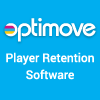This is part one of a two-part interview with David Brevik. David is CEO of Gazillion Entertainment, the company behind the massive online ARPG Marvel Heroes. If you’ve noticed a similarity between the gameplay in Marvel Heroes and Diablo, that’s because David co-founded Condor (later Blizzard North) and helped design Diablo and Diablo II.
Last year, Gazillion rebranded the game as Marvel Heroes 2015. Recently, we asked David about the strategy, about the company’s open approach to PR and about how the company continues to rapidly crank out new content for the game.
Gamesauce: Where did the decision to rebrand the game as Marvel Heroes 2015 come from?
David Brevik: When the game was released, it was not very good. We had not really finished the game, and we released it early for a variety of reasons. So it came out and got a poor Metacritic score, it was not very good, it had a lot of issues, a lot of problems and stuff. So we kind of buckled down and worked on it and improved it, and worked with the community and we’re very open and honest about where we are, and etc. etc. And slowly but steadily, we’ve improved it. Week after week — we patch the game every single week. We’ve added features, added heroes, fixed bugs, made a better end game, added new item chase, all sorts of stuff to make the game a much better game.
And so a year later, we were in a situation where, well, the game is out, and it’s much better now than it was then, and so how do we get people to pay attention to this? Because most press outlets, the way that they work is they’ll review a game at the beginning, but they’ll never review it again, which is not really fair, especially in a live service game. They haven’t really adapted to that kind of model. They sort of do this on a season-by-season basis for TV shows and things like that, so every season, you can kind of go up and down with your rating, but that’s kind of the closest equivalent that’s in most of the industries.

Because it’s a free-to-play game and we’re patching it every week, we don’t have like an expansion — that’s another way games as a service (get reviews). We were releasing everything for free … so we didn’t have an expansion to market, so we came up with this idea — “Hey, we’ll rebrand it on a yearly basis, kind of like they do with sports games” … and we’ve put more, we feel, in changes and difference than they do in a year-to-year annualized sports product.
It’s kind of a common practice for annualized products … so we took that, and said we’ll rebrand it as Marvel Heroes 2015 and get new reviews, and we were able to raise our Metacritic score from a 58 to an 81, which proved that all of our hard work and effort had really gone a long way, making the product much better. And it garnered a bunch of new attention, and a whole bunch of new audience.
GS: Is it the plan to rebrand the game annually?
DB: I think that that will be the plan. We did it last year on our anniversary, but this year I think we’re going to do it a little bit later … As Jeff Lind, our exec producer, says, “Until there’s a Buick on the show floor for 2016, I don’t want 2016 on our product.” … And we’ll have sort of a big patch associated with it.
GS: And I think, with games as a service and the ability to continuously update the game after launch, it’s a big question for many developers to know when they should launch. Do you have any advice on deciding when a game is ready to release?
DB: First, hold off as long as you possibly can. Because it will just get better and better and better … The higher quality it is, and the better it is, the more money you’re going to make, basically. So starting out on the right foot helps a lot. Try and hold out as long as possible, but also realize that that’s not always practical or realistic or even possible, especially because basically time is money.
If you don’t feel like you’re quite there, my second tip is that you should almost always, almost under every circumstance, launch as a beta. I think our biggest mistake was the fact that we didn’t launch with the beta tag. If we had done that, people would have been much more forgiving. There’s no reason, just like Gmail was in beta forever, people will forgive you better if you call it a beta and market it as more “We know where we’re at,” and people are much more forgiving of something at that point, and still willing to spend money.

GS: You mentioned that when you were revamping the game, you took a lot of community feedback. And that’s been an ongoing process. I’ve seen you do streams with your wife (thejunglequeen on Twitch), as well as quite a few interviews and AMAs. Was all of that part of a concerted effort, or did you just sort of fall into it, or was it a combination of the two?
DB: A little bit of both. When the game came out, kind of the plan was that we were going to really be open and honest and engage the community, and try and keep our customers around and say, “Hey, we know where we are, give us a chance, we’re going to make this better, and we’re going to prove it to you by doing this little thing and make it better, and we’re going to ask you what you want to see changed and we want your feedback, and we’re going to improve this and that and the other thing,” you know, being very open about the development process and where we are and the priorities and whatnot, and that really creates a lot of loyalty amongst your community, which is critical if you’re going to try to turn a business around, that the community be really involved.
And that meant a few things. First, we opened up the forums. So everybody in the entire company can post on the forums, and it’s encouraged to do so, and interact with the customers, so it’s not just a single voice. And that was a big change from the way we were doing things. And then we started getting really involved in everything: on Twitter, or Reddit, in the forums.
And as a natural kind of extension from that, we started doing a bunch of streaming, I started watching a lot of streaming, and then I got excited about doing it myself. I wasn’t sure if we should or not, but then my wife convinced me, “Hey, we should do this.” And so I did, and now that it’s been going on for a couple of years now, I have to say, I find it super refreshing and amazing the way that we do things. I think that it is an extremely rewarding experience for myself. I’m able to go out there and talk about the product and enjoy the product with other people.
Yeah, there are bugs and other things like that, but we can fix them and work on them and whatnot, so there are some times of mild frustration with a particular feature not working right or whatever, but for the most part, I’m really able to kind of engage and communicate and work with fans of the game, and with the public and introduce people to the product and things like that, and that has been really, really rewarding for me.
Because that’s what gaming is all about for me. It’s about making something fun that people can enjoy together. And to be a part of that process, and feel really integrated with the audience, and be a member of the audience and fangroup for the product, it’s really a very amazing experience. And it’s a lot different than, I think, a lot of game developers, which kind of have an almost high-and-mighty kind of attitude toward the audience. For me, that’s not what it’s about, it’s about making something fun that we can all enjoy together.
GS: Criticism can be hard to take, though. Do you ever regret being so accessible to the community? It seems like you’d be getting a lot of feedback about bugs, and you have people asking you every 12 minutes when it’s coming to PlayStation 4. How do you cope with such constant feedback?
DB: I don’t mind it at all. I’m very open to ideas and criticism, especially when it’s legitimate, and especially when I agree with it. It’s like, “This bug sucks,” and I’m like “Yeah, that bug does suck. Let’s get that fixed!” I think that I empathize with the audience in a lot of ways, and mainly because I am part of the audience, as well. I think that that kind of takes a lot of the ego out of it, if that makes any sense.
No game is perfect. No game is bug-free. Every game can be criticized for something. But that’s games as a service. That’s one of the things that I like about what we’re doing, is that I can change it. I can change anything. And so we have the power to do what we need to do to make it better. So even though it may be gloomy sometimes — a lot of times, though, the community will actually, because of our interaction and dedication to our audience, they kind of support us in return.
I’ll see something on Twitter: “I can’t log on! It’s been three days, and I’m pissed off,” or whatever, then somebody will send a reply and say, “Hey, I know that it’s been tough, but they’re working on it, and I know that they patched twice this weekend, you know, they’re in on the weekend working on this, they’re working as hard as they can” or whatever.
It won’t be somebody from Gazillion saying this, it will be a member of the community talking about it, you know. So we create this bond, where everybody’s playing together, playing nicely, and even though there are cranky people — and a lot of times, deservedly so — we all work together as a community to foster sharing of information and quelling fears and paranoia or whatever, and people are tempered about whatever it is. And I think that all of that interaction really pays its dividends in the form of the community supporting us almost wholeheartedly all the time.
GS: Does it ever surprise people when they get a response from one of the game’s creators?
DB: Yeah, it does. And a lot of times, they’ll change their attitude, too. They’ll say something flippant about whatever it is, and I’ll say, “Hey, that sucks. I’m sorry,” or “We’re going to look into this. I’ll make sure that this gets fixed,” or “Why don’t you send me a message on the forums, and we’ll talk more about this.” And they’ll be like, “Oh, wait — oh, wow! Wait, you responded? That’s really weird! Thank you! I think…” And so it does sometimes catch people off guard, for sure.

GS: And you see that reversal pretty often in forums and things like that. I wanted to talk about how you guys have just been really churning out a lot of content for the game, and I wondered: How do you keep up with such constant updates?
DB: We have an amazing production team, and an amazing development team. We’ve got very talented people here that work very hard. And it’s mainly, it’s about organizing and making sure that we manage our expectations of our audience and ourselves. We try not to burn everybody out. This is very much a marathon, not a sprint, so we just have continual crunch. So we do a lot of things to try and get people to estimate their hours on a task, and organize what tasks can be done in a particular release window, and kind of organize their time.
And sometimes they’re really accurate on how well they’re addressing that, and sometimes we do need to have a couple days of crunching here or there. For the most part, we avoid working crazy, crazy hours, but it’s mainly just all of the systems that we use to estimate our tasks and then organize them with the production team. And that gets everybody fed all the parts that they need to get fed, and all of the production can take place.
Oftentimes, Design will be a couple of months ahead, and then the actual production of whatever technology needs to be built may happen next — if there’s new technology, and all the art assets that need to be made to work it together, and then putting it all together, and then design comes back and fiddles with it, and makes sure it all works together.
And so that kind of process, it’s complicated; there’s lots of different parts, and we’ve got a team of people that coordinate all the different parts of that constantly. And so, really, kudos to them to actually get a lot of this stuff out the door in a timely fashion.
GS: Right now, there are a ton of characters in Marvel Heroes 2015, and more are released pretty regularly. Do you have any guiding principles that help you keep the game balanced as you’re continuously rolling out these updates?
DB: We do. I don’t know how successful we are at that [laughs]. We have kind of a system in place, internally, for balance, and we have tools that are getting better and better. They’re not perfect, but we have tools to try and help regulate the amounts and curves for damage and hit points, and things like that, and modifiers on those curves and whatnot.
So that kind of comes out with the complete package, but it’s all based on a set of data that kind of universally runs the game. And so doing modifications on that and things like that create different types of gameplay, but the underlying base of the entire game is built on some special tables that kind of guide the entire game as far as difficulty and DPS and all sorts of stuff like that. And so it’s all kind of extensions of that.
As far as design of the characters go, that design of the characters comes from being fans of the Marvel universe and the character, and so they’ll have mechanics that are different for each hero. Those are sometimes easy to come up with; sometimes they’re not as easy. But those are the things that I think are the most difficult to balance. Because a lot of the time, they’re radically different from each other.
You know, Ant-Man just came out, and he’s got a bunch of ants running around with him. Well, no other character has a bunch of ants running around with him, so it’s like, “Well, how much damage should these things do?” “I don’t know!” … So anything like that, that varies from hero to hero, makes that process a little more difficult than it would be in kind of a standard RPG.
GS: What advice would you have for someone building their first ARPG, RTS or other game with complex balance requirements?
DB: I think that it mainly comes from experience and from examining other products that are out there. The easiest way to start is to go out and imitate something that’s already out there, and if you have access to the numbers, just use their numbers for now. The longer you can use their numbers and kind of reverse-engineer them, then you can get to a point where, “Oh, I understand what they’re trying to do here.”
And when in doubt, just go with what you consider to be well-balanced stuff. And a lot of times, it comes down to a goal. In an action RPG versus maybe an MMO, one of the key factors is how long is it going to take me to kill this monster? Maybe in an MMO, it’s 30 seconds, or a minute, or something like that toward the end. Maybe in the beginning, it’s 10 seconds, but at the end, it’s a minute or whatever, a minute and a half. Whereas in an action RPG, it’s tenths of a second. So it’s kind of reversing your engineering based on your goals of how you want combat to interact and how long you want it to take.
And they should also radically vary those numbers at the beginning, so it feels like the thing that they want.
Check out part two of this interview, where we discuss working with Marvel’s colossally popular and complex intellectual property.





















